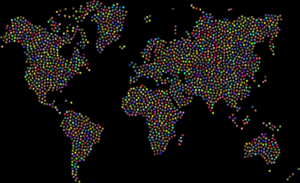By James Booth, VP, Head of Partnerships EMEA at PPRO
COVID-19 has shaken the global economy. Social distancing has drastically shifted consumer behavior and introduced a new set of challenges to stores and shoppers alike. For merchants, it has been difficult to manage a dip in discretionary spending, a rapidly increasing number of online shoppers, and an explosion of competition in the market.
In the following, we travel to a not-so-distant future and take a look back at 2020. What happened to payments and global commerce? What changes are here to stay?
Local payment methods continue to drive ‘Glocalization’

In 2020, COVID-19 drove consumers to look outside their immediate geography for goods and services. Major drivers of this included price point, quality of products, and availability due to global supply chain challenges. The opportunity for merchants to sell across their borders became even greater and acted as a solution to bridge revenue gaps and increase reach to an entirely new, global audience. Now, in 2022, most large and medium-sized retailers are selling across borders.
While it’s become easy to navigate logistics around the world, collecting funds in other markets is still a different story. Like all aspects of culture, payment preferences vary from country to country. In fact, over 70% of global e-commerce is powered by over 450 local payment methods. E-wallets like Alipay, WeChat Pay, and GrabPay dominate payments in Asia, now more than ever.
How local payments changed during COVID-19

The payment needs and preferences of global consumers are more diverse than ever. Still, a global trend has been the accelerated shift from cash and card payments toward digital payment methods. Out of social distancing necessity, the pandemic led to increased use of contactless, digital payment methods like mobile e-wallets, bank transfers, and QR codes.
When it comes to shopping online, installment payment methods like Klarna and Afterpay surged in use, as they enabled shoppers suffering from the economic impacts of COVID-19 to defer payments and still buy what they wanted. Before the pandemic, apps like these were primarily used by younger demographics to break up payments on big-ticket items, luxury goods, and travel. Many consumers now prefer a ‘buy now, pay later’ option.
In 2022, the markets that have remained predominantly digital are markets that had low cash use before the pandemic: the US, UK, Western Europe, and large parts of Asia. Cash-based payment methods remain popular for some economies around the world (especially in Latin America, where there are still high percentages of unbanked consumers). However, we are closer to a completely cashless society in 2022 than we have ever been.
Setting up for post-pandemic success

As more competition came online, consumers who were already insisting on intuitive user journeys pre-pandemic now have zero tolerance for friction. When it comes to that all-important payment experience – the make or break moment of conversion – it’s critical to have payment flows that feel invisible for digital natives yet inspire trust for those late-adopters.
Offering the local customer’s preferred payment methods has always been a critical part of boosting conversion across borders. During the pandemic, as consumers clung more tightly to their money, the demand for payment methods that were familiar and trusted only increased. Offering local payment methods was mutually beneficial: Many consumers have new ways to shop, and retailers now have access to larger, global audiences. And despite the havoc wreaked on the global economy, it’s come out stronger than before.
In 2022, e-commerce – powered across the globe by local payment methods – continues to be a powerful force for good, connecting people with products that improve their lives.
Here’s an important element to realizing a more stable 2022: merchants must offer customers a great experience now. The businesses that do will end the lockdown period with a larger and more loyal customer base than those who neglect the payment experience.

James Booth has over ten years of experience in the financial sector, eight of those in fintech. As VP, Head of Partnerships for EMEA, he leads the new business and partner development teams in managing PPRO’s new and existing strategic partnerships. He also acts as PPRO’s internal advocate for aligning the company’s product roadmap with the needs of its customers.








LET’S CONNECT